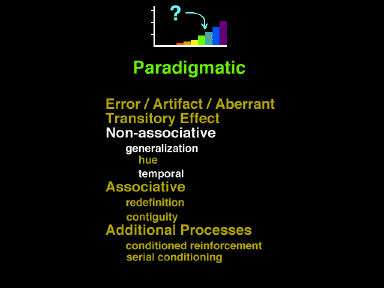 Slide 2-22
Slide 2-22

 Slide 2-22
Slide 2-22
There remained the possibility that the birds were not under the control of the hue at all. It could be as if they were blind or not attending to the stimuli. In that case, accelerated responding across the final portion of the interval would occur in spite of the change to alternate stimulus orders implemented in the prior experiment. In fact, the rates should show the steady increase in spite of any changes whatsoever to the key color.
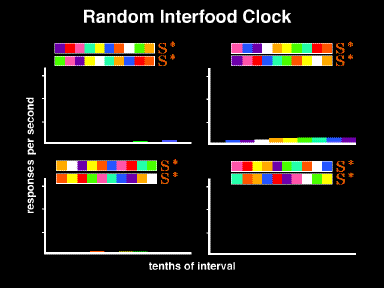 Slide 2-23
Slide 2-23
This experiment presented randomly arranged stimuli on every trial. In this way, the position of a hue was not correlated with time to food. If the birds were not attending to the hues, then this manipulation should have had no effect on their behavior. This hypothesis was not confirmed, rather responding was abolished. This result indicated that if the key color was not correlated with relative position in the interval, then it no longer controlled pecking.
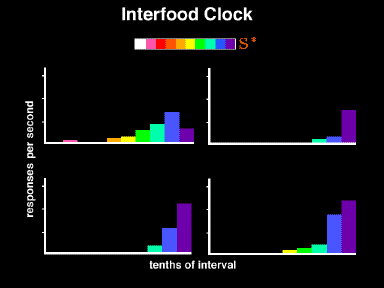 Slide 2-24
Slide 2-24
In order to assure that the loss of responding was not due to a simple loss of behavior over time, the baseline procedure of a correlated clock was reimplemented. When the stimuli were again correlated with the passage of time, increased responding again occurred across the second half of the interval. This recovery added further support to the contention that the responding was associatively maintained, rather being a meta-stable artifact.
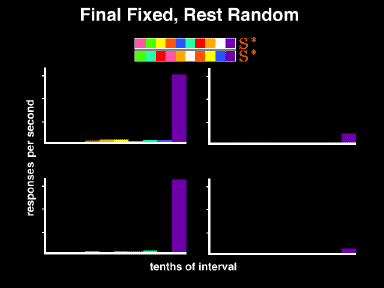 Slide 2-25
Slide 2-25
There remained a possibility that the clock responding was primarily nonassociative, but that it required an associative link between the final stimulus and food presentation. It could be argued that the associative link generated key pecking and it subsequently simply spread to the other stimuli through nonassociative temporal generalization.
In this procedure, the final stimulus was always presented immediately prior to food presentation; the remaining stimuli were randomized. If nonassociative spread were responsible for the responding under a simple clock, then responding throughout the second half of the interval would be expected, even though the stimuli were uncorrelated with the passage of time. As can be seen, responding only occurred to the stimulus systematically correlated to the time of food presentation.
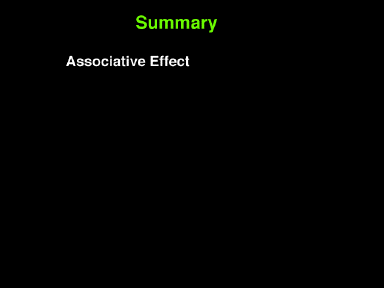 Slide 2-26
Slide 2-26
In summary, to this point, the research has demonstrated that the responding across the second half of an interfood interval is the result of associative processes. In everyday language, it is because of the information provided by the stimuli about the passage of time in the interval that the stimuli control responding.
Date Last Reviewed : May 26, 2003